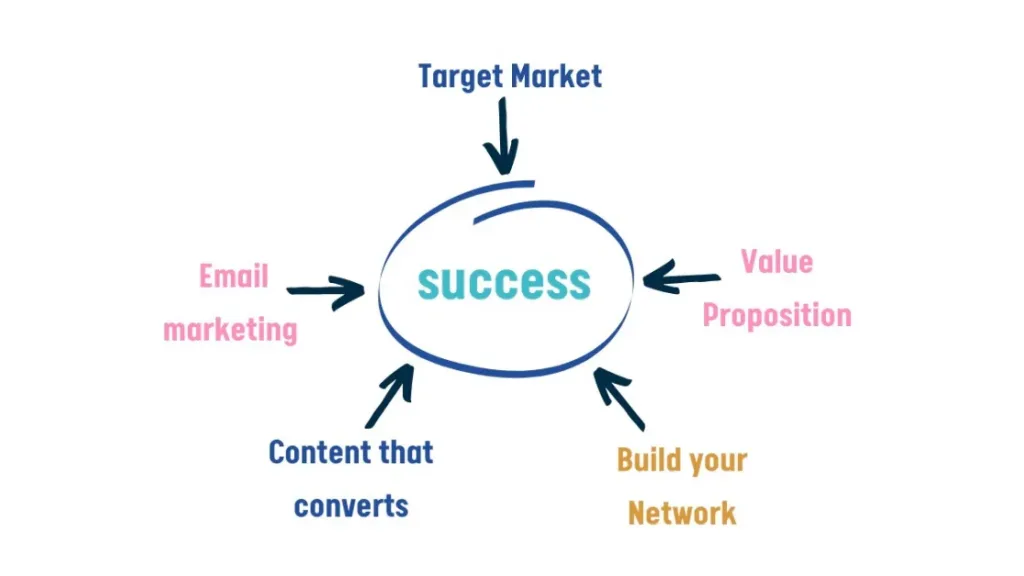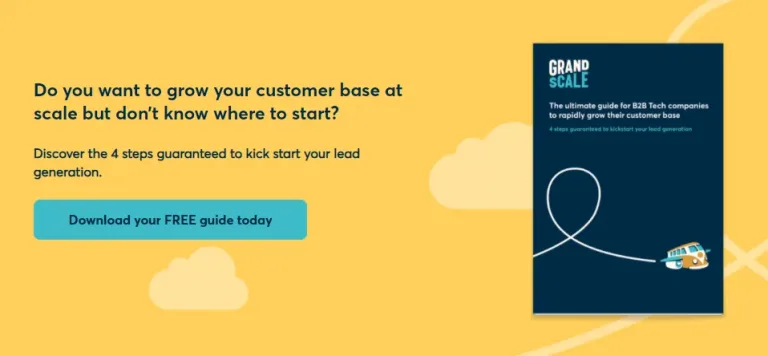
5 Secrets to Unlocking Marketing Success for Startups
With limited time, a tight budget and lots of other responsibilities, how in the world can you ever fit in marketing as a start-up business?
But you must. Because the stark reality is that 70% of tech start-ups fail within 20 months. And a major factor is the huge skills gap in marketing and sales.
To avoid being part of that statistic you need a solid, practical strategy that works. These 5 secrets to successful marketing for start-ups will set you on your way.
1. Be laser-focused on your target market
Realistically, you can’t pursue every market you have an interest in. Be laser-like in determining where you can most effectively differentiate your brand and attract the most profitable customers who resonate with your offering. - “When you speak to everyone, you speak to no one.” Meredith Hill
Force yourself to narrow your focus to one market segment and then define your ideal customer profile and champion buyer. Ask yourself:
- What market segment is my ideal customer/company in?
- Where are they located?
- What size is the company (revenue/headcount)?
- How long have they been in business?
Identify the key characteristics of your ideal customer/company. Gather the facts and stats you can use to source many more companies like them. You can then create a dream customer list
Next identify the champion persona within your dream organisation.
This is the person with the Budget, Authority and Need for your product or service. And make sure it’s the right time for them to buy (BANT criteria).

It’s important to tailor your marketing to finding and attracting these champion persona as they will be the gateway to more customers. Check out our Persona blog and grab our free template to get started.
2. Develop a compelling value proposition
It might be obvious to you why your product or service can change the world, but potential customers need to understand and be convinced of its value. Only then is there a chance they will move out of their comfort zone and consider adopting your product.
You need to be able to clearly articulate your value to prospective customers. Forget features and benefits, it’s the problem you solve (their pain) or goal you help them achieve (their gain) that really counts.
3 Elements to Product-Market Fit

So what's a value proposition (VP)?
A VP is a written statement that outlines how your product or service will benefit your customers and why you are better than the competition. It’s an extremely powerful tool in sales conversions.
Read our blog to find out how to nail your Value Proposition.
Use your VP messaging consistently across all communications and ensure your team knows it by heart. At every touchpoint, from pitch decks to sales collateral and website content, hammer home your value.
3. Network to build net worth
Building your network is key to the success of your start-up because your network is your net worth.
It is one of the most effective ways to find new customers. But it takes time to find and engage at an individual level with each prospect. So how do you build brand awareness with volumes of prospects?
The answer is to find communities, networks and groups with volumes of people matching your target audience. Spend time researching this. Where do they hang out online and in person? What associations, partners or gatekeepers do you need to build relationships with to get access to your ideal customers?

You should also connect and collaborate with leaders and influencers within your sector to build credibility. Consider referrals, affiliation partnerships or other commercial agreements that offer mutual benefit. This drives sales from your networks.
4. Generate content that converts
Get this. Content marketing far outperforms traditional marketing. It costs 62% less yet generates three times as many leads.

So start writing great content that generates leads. How?
- Address the goals, challenges and objections of your champion persona.
- Focus on WHY you do what you do (customer needs and outcomes) not HOW you do it (product features and benefits). Keep technical jargon to a minimum.
- Use customer success stories and testimonials. It’s one of the most effective forms of content for converting leads. According to LinkedIn’s Demand Gen report, 79% of B2B buyers read case studies when they’re in the sales process.
- Give before you ask. Share valuable content with prospects before asking for a call or a meeting. By providing high value content you position yourself as a thought leader in your market.
- Include a clear call to action. You want to guide your audience through a sales journey with clear instructions on the next steps. For example,’ read this case study’, or ‘schedule a call’.
5. Use email, the most powerful marketing channel
If you’ve been trying to understand all the different marketing channels – from LinkedIn and TikTok to advertising and PR – you’ll probably be feeling a bit overwhelmed and wondering where to start. Here’s a secret – email marketing is the most powerful marketing channel in terms of lead generation.
Email marketing generates $44 in revenue for every $1 spent. It’s 40 times more effective at generating sales than social media (source: Campaign Monitor).
So prioritise investment in email marketing. It will play a pivotal role in your marketing strategy including lead generation, brand awareness, building relationships and engaging customers.
Where to start:
- Invest time in building a clean mailing list based on your ideal persona criteria
- Automate your email marketing by using a software tool such as MailChimp or Hubspot
- Communicate weekly with prospects so that they get to know, like and trust you.
Need help with marketing your startup?
Download The ultimate guide for B2B companies to rapidly scale their customer base to learn how to systematically engage with a significant volume of high value leads, nurture them through automated marketing and generate a sustainable pipeline of potential customers for your business.


